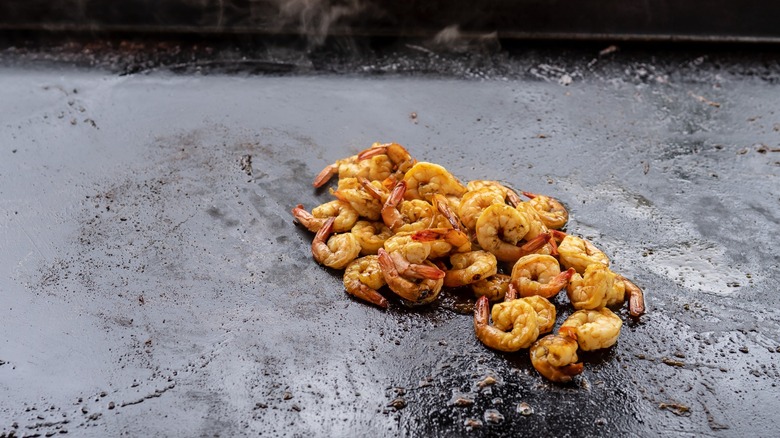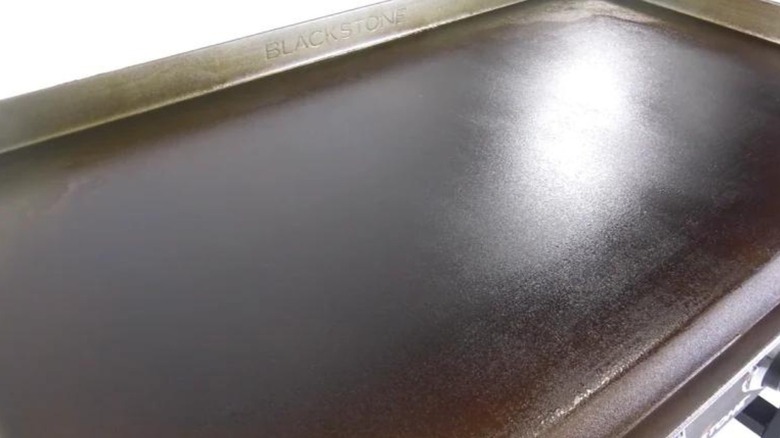How To Properly Clean Your Blackstone Griddle After Cooking
Having an outdoor griddle takes your backyard cooking setup to a new level. Grills are great and smokers are cool, but a griddle is in a class all of its own. Of course, all of that hype goes down the drain in the blink of an eye if your griddle looks like trash. Love it or hate it, you have to keep a regular cleaning regimen if you want your shiny new Blackstone griddle to continue to impress.
Your greatest enemy when it comes to taking care of your griddle is rust. Blackstone griddles are made from carbon steel, which includes iron, so rust is an ever-present threat. Keeping rust at bay means regular cleaning and seasoning. That may sound like a lot of work, but we're gonna break it down for you and show you that it's not that bad. The best way to keep your griddle looking good is to make sure you clean it every time you cook with it.
Griddle cleaning 101
For regular cleaning maintenance, you'll want to have a metal scraper, paper towels, vegetable oil, a spray bottle full of hot water, and a microfiber towel at the ready. Start by scraping all of the bits and pieces of food off the griddle and into your drip pan. Next, spray the surface with some hot water and use a paper towel to clean all the gunk off. If something is really stuck on there, use more water to try and loosen it up. If you're cleaning after you cook regularly, you shouldn't have an issue with food being difficult to wipe off. Once you're done, use your microfiber towel to dry off the griddle.
Now that you've got your griddle looking nice and clean, it's time to season the surface. You should have done a more thorough seasoning before your first time using the griddle. This won't be as in-depth, we just want to touch up the seasoning so it stays intact. We'll do this by applying a small amount of vegetable oil to the griddle. Use enough to cover the whole surface but don't use so much that the oil starts forming pools. You want it to look shiny and oiled, not overflowing. And that's it. Allow the oil to soak into the griddle on its own. Your backyard kitchen is now ready to take on another day.

